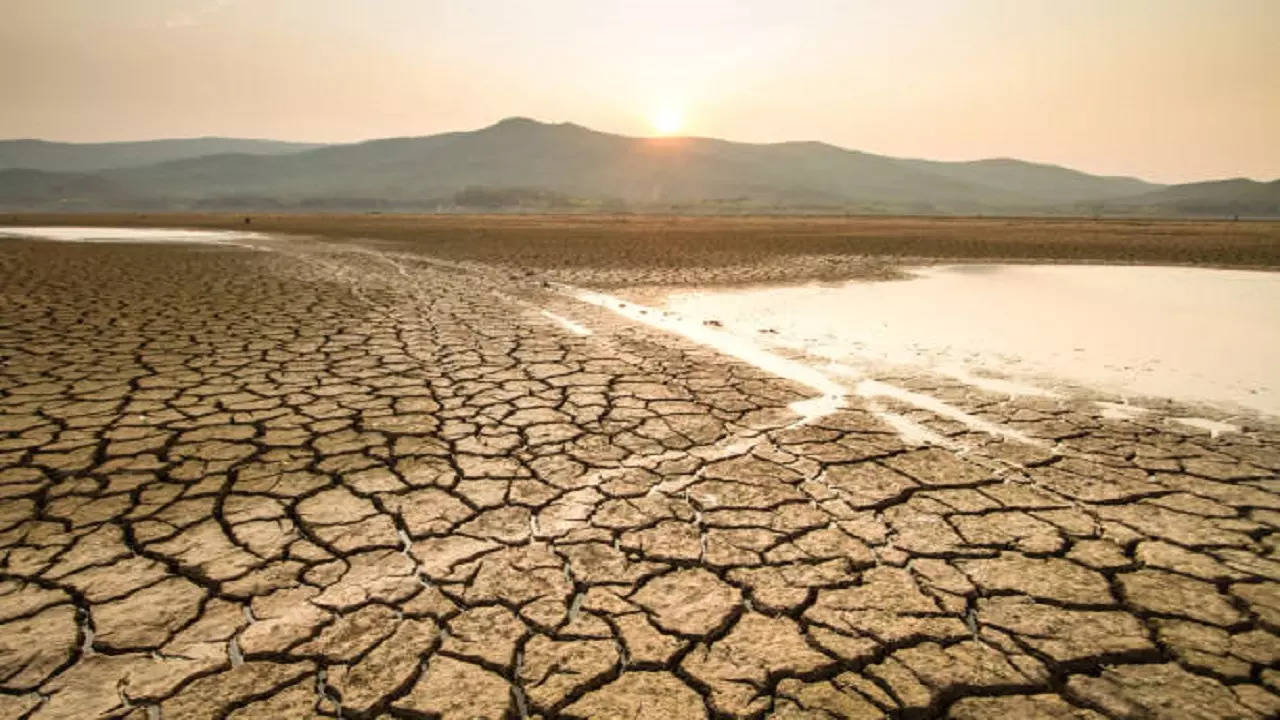Know what this 1,000-year-old Meghalaya cave says about India’s droughts
Around the 1870s, scientists started using tools to scientifically measure the monsoon rainfall in India. Since then, India has gone through around 27 widespread regional droughts. Only one of these, from 1985 to 1987, had a drought that lasted three years straight or longer. Some of the drought patterns revealed in these Meghalayan caves have coincided with the fall of the Mughal Empire and the decline of the mighty textile industry.

Representative Image.
Photo : iStock
KEY HIGHLIGHTS
- Drought patterns coincide with major geopolitical shifts, stalagmites show.
- It is important to study weather patterns to predict the future of agriculture economy.
Shillong: A Meghalayan cave's stalagmites have provided an accurate timeline of severe and prolonged droughts in India over the past 1,000 years, which coincided with historical occurrences like the Mughals' abandonment of Fatehpur Sikri, the infamous Chalisa famine that claimed 11 million lives, and the 17th-century Deccan famine.
Rainwater has been steadily dripping from the ceiling in the same location in a remote cave in northeast India for more than a thousand years. Every drop of water deposits minerals into the floor below, where they gradually build up to form calcium carbonate towers known as stalagmites.
These stalagmites are more than just natural marvels; like tree rings, their layers preserve the history of the area's rainfall. Additionally, they serve as a warning about the likelihood of devastating, multiyear droughts in the future, The Conservation reported.
According to a recent study on the geochemistry of these stalagmites, which was published on September 19, 2022 in the Proceedings of the National Academy of Sciences, the Indian subcontinent frequently suffered from protracted, severe droughts that were unlike anything else that had been recorded in the 150 years of reliable monsoon rainfall measurements.
The drought episodes that were found coincide remarkably with previous reports of famines, mass deaths, famines, and geopolitical shifts in the area.
They demonstrate how the worst 30-year drought of the millennium corresponded with the decline of the Mughal Empire and India's textile industry in the 1780s and 1790s.
The extent of the famine described in historical texts at the time would have been brought on by the severity and duration of the drought, which resulted in widespread crop failures.
The Deccan famine of 1630–1632, one of the most catastrophic droughts in Indian history, is another protracted period of drought. Due to crop failure, millions of people perished. The Guge Kingdom fell in western Tibet at the same time that the grandiose Mughal capital of Fatehpur Sikri was abandoned.
The findings have significant implications for water planning now in a warming world, especially for India, which is quickly approaching becoming the world's most populous nation thanks to its massive agriculture sector that depends on the monsoon.
Trending:
End of Article
Subscribe to our daily Newsletter!





Related News





Interview with Dr. Debraj Shome on Shifting Perceptions in Cosmetic Surgery: Prioritizing Safety and Innovation

1937 Mercedes-Benz 540K: The Resurfacing of a Star from The Pranlal Bhogilal Collection!

Brothers Hacked In Front Of Eyes, Boy, 10, Shares Chilling Details Of UP Double Murder

Delhi Police Recovers Body Of ACP'S Missing Son From Haryana's canal

15-Year-Old Rape Survivor Hangs Herself After She Was Found Pregnant









